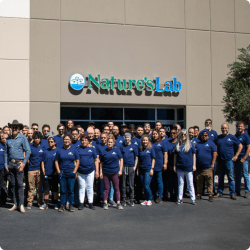

The importance of iron can’t be understated. Our red blood cells have difficulty functioning properly without it. In fact, 70% of the iron found in our body is located in our red blood cells. What are the different forms of iron and are there advantages to taking some forms over others?
What is Iron and Why Does the Body Need It?

Iron is a mineral that we can’t make in our bodies. Since we are not able to synthesize it, iron is categorized as an essential nutrient that must be obtained from the diet. As mentioned, iron’s most important job is for red blood cell maintenance. Red blood cells contain hemoglobin which is where iron is stored. Hemoglobin transports oxygen to our tissues and also removes wastes like carbon dioxide. Iron is found in other parts of the body besides red blood cells. It is also found in smaller amounts in the liver, spleen and bone marrow.
Iron is one of the nutrients our thyroid requires to do its job efficiently. The thyroid is part of our endocrine system. It regulates functions ranging from digestion to metabolism. Most of us are aware of iodine and its role in relation to the thyroid, but iron intake is also a main contributor to healthy thyroid function. The thyroid gland produces many different hormones and enzymes, one of which is thyroid peroxidase. Thyroid peroxidase cannot be produced without enough iron in the diet.
Plant and Animal Types of Iron

Iron is more easily absorbed from animal sources than plant sources. Iron from animal sources is called “heme” iron and iron from plant sources is considered “non-heme” iron. Heme is a substance found in blood. It binds directly to iron molecules, so it would make sense to classify plant-based iron sources as non-heme. A mix of plant and animal sources is a balanced approach to increasing your iron intake.
Food Sources of Iron

If you consume meat, liver is a fantastic choice for increasing your iron. One 3.5 ounce serving of beef liver contains 6.5 mg of iron. This means that just one serving of beef liver meets over one-third of your daily iron requirement. However, liver is not the only food that offers ample amounts of iron in each serving. Spinach contains about 15% of your daily value of iron, or 2.7 mg of iron per 3.5-ounce serving. You can increase your absorption by pairing iron with a food or beverage high in vitamin C. Vitamin C is often found in citrus fruits and brightly colored vegetables. In fact, spinach is a smart choice for fostering healthy iron levels as it naturally contains vitamin C. Other foods high in iron include clams, pumpkin seeds, legumes, turkey, broccoli and quinoa. Another little known tip for increasing your iron– cooking in a cast iron skillet. An old-fashioned cast iron skillet may add as much as 16% additional iron to food. In countries where iron deficiency is common, health advocates have encouraged the use of cast iron cookware.
What Form of Iron Should I Take?

Iron is available in several forms; ferrous gluconate, ferric citrate, ferrous sulfate, carbonyl iron, iron bisglycinate chelate and others. Iron bisglycinate chelate is gentle on digestion and studies show it is effective in significantly raising serum iron levels. This type of iron is found in Nature’s Lab Perfect Iron. This high potency formula provides 139% of your daily iron requirement in one capsule. Iron bisglycinate chelate, ferrous gluconate and carbonyl iron are typically well-tolerated by the digestive system and less likely to cause constipation.* Carbonyl iron is a supplement that naturally breaks down more slowly in the digestive system, leading to its gentle profile. We use carbonyl iron paired with vitamin C for enhanced absorption in our Iron Plus Vitamin C Fast Melt Tablets. No matter how you choose to get your iron, shoot for 18 mg per day. If you opt for supplements to help you meet your requirements, Nature’s Lab has great options within our Iron Collection to choose from.
Shop our Iron Supplements.
References
Adsul, B. B., Baliga, V., Gawde, A., Desai, A. (2005, June). Comparative assessment of the bioavailability, efficacy and safety of a modified-release (MR) carbonyl iron tablet and oral conventional iron preparation in adult Indian patients with nutritional iron deficiency anaemia. Journal of the Indian Medical Association. Retrieved October 7, 2022, from https://pubmed.ncbi.nlm.nih.gov/16225161/
Chatterjee, S., Chakrabarti, P., Sinhamahapatra, P. (2021, February 25). Relationship between iron metabolism and thyroid hormone profile in hypothyroidism. International Journal of Research in Medical Sciences. Retrieved October 7, 2022, from https://www.msjonline.org/index.php/ijrms/article/view/9269
Name, J. J., Vasconcelos, A. R., Maluf, M. C. V. R. (2018, November). Iron bisglycinate chelate and polymaltose iron for the treatment of iron deficiency anemia: A pilot randomized trial. Current pediatric reviews. Retrieved October 7, 2022, from https://www.ncbi.nlm.nih.gov/pmc/articles/PMC6416187/
Geerligs, P. D. P., Brabin, B. J., Omari, A. A. A. (2003, August). Food prepared in iron cooking pots as an intervention for reducing iron deficiency anaemia in developing countries: A systematic review. Journal of human nutrition and dietetics : the official journal of the British Dietetic Association. Retrieved October 7, 2022, from https://pubmed.ncbi.nlm.nih.gov/12859709/
Berger, S. (2022, October 5). Best iron supplements of 2022, according to experts. Forbes. Retrieved October 7, 2022, from https://www.forbes.com/health/body/best-iron-supplements/
Lui, N. (2022, February 23). 3 simple cooking tricks to boost your Iron Levels. EatingWell. Retrieved October 7, 2022, from https://www.eatingwell.com/article/7948384/simple-cooking-tricks-to-boost-your-iron-levels/
Iron-deficiency anemia. Johns Hopkins Medicine. (2020, July 20). Retrieved October 7, 2022, from https://www.hopkinsmedicine.org/health/conditions-and-diseases/irondeficiency-anemia
U.S. Department of Health and Human Services. (n.d.). Office of dietary supplements - iron. NIH Office of Dietary Supplements. Retrieved October 7, 2022, from https://ods.od.nih.gov/factsheets/Iron-Consumer/
U.S. Department of Health and Human Services. (n.d.). Office of dietary supplements - iron. NIH Office of Dietary Supplements. Retrieved October 7, 2022, from https://ods.od.nih.gov/factsheets/Iron-HealthProfessional/
UCSF Health. (2022, June 24). Hemoglobin and functions of Iron. ucsfhealth.org. Retrieved October 7, 2022, from https://www.ucsfhealth.org/education/hemoglobin-and-functions-of-iron
Spritzler, F. (2020, January 27). 12 healthy foods that are high in iron. Healthline. Retrieved October 7, 2022, from https://www.healthline.com/nutrition/healthy-iron-rich-foods







